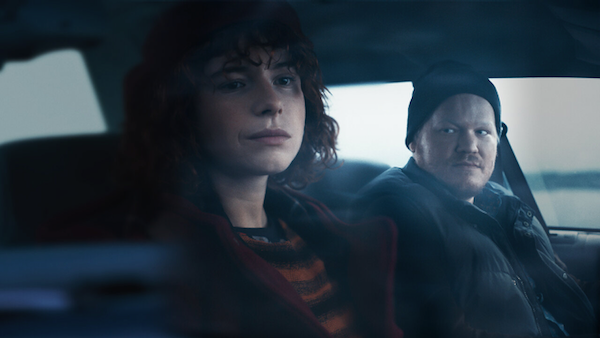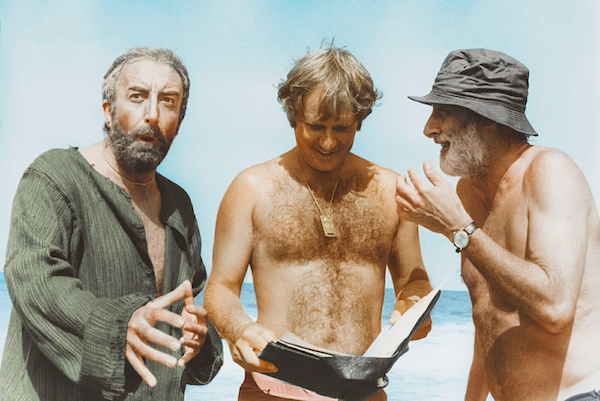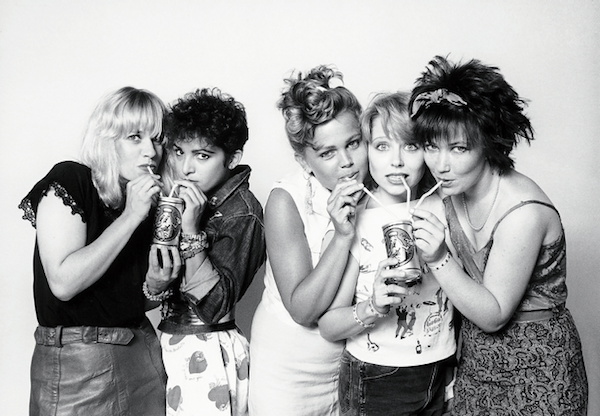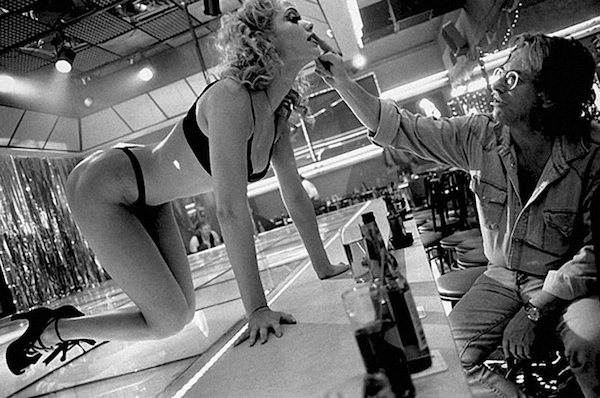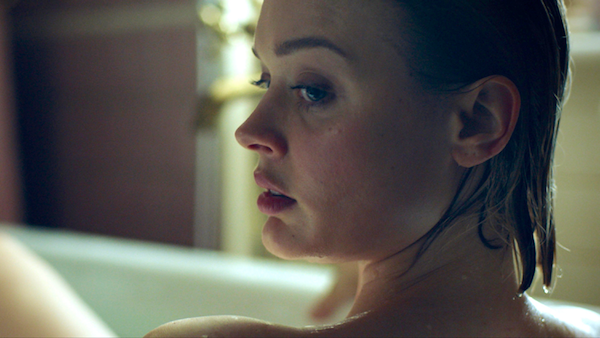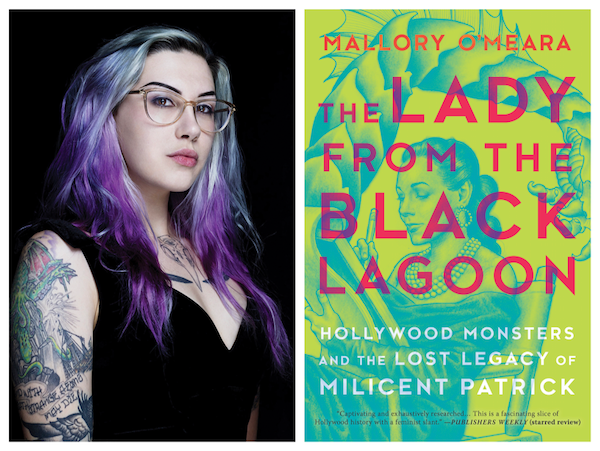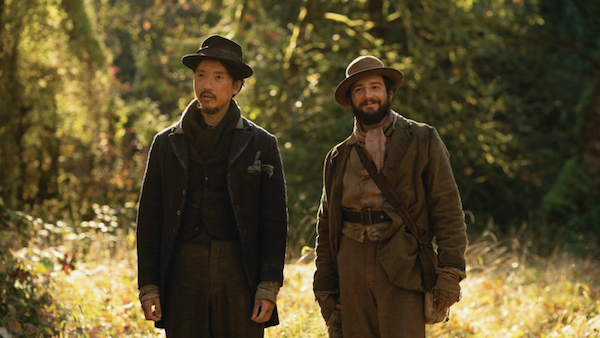
Interview by Greg Carlson
Matt Dreiling worked for twelve years as a cameraman, gaffer, and cinematographer on feature films, documentaries and commercials. A few years ago, he fled Hollywood with his girlfriend for the wilds of Montana to begin the second act of his career.
Dreiling is the author of “Black Sunday,” a graphic novel about the horrors of the American Dust Bowl. “Black Sunday,” published by American Gothic Press, is available at Comixology.com.
Greg Carlson: What is the current state of your movie collection?
Matt Dreiling: During the decade I lived in Los Angeles, I had to, at various points of economic insecurity, sell off my media to make ends meet. I ended up saying goodbye to hundreds of DVDs, including lots of Criterion stuff, mostly at a significant loss.
Only rarely was something worth more than it originally cost. I remember standing at the counter in Amoeba and handing my Criterion Beastie Boys collection over to the clerk. At the time, it must have been out of print or at least unavailable, and they gave me 86 dollars for it. It made my heart ache, but I was able to eat for several weeks on that $86.
It is embarrassing to admit, but I also sold my David Lynch disc of short films.
GC: The one with the cool packaging you could order from his website?
MD: Yeah, that one fetched a pretty penny. The only two movies that I have left on my shelf, and I’m looking at them right now, are the “Citizen Kane” edition from Warner Brothers with the great Ebert commentary and the Image/Blackhawk issue of “The Cabinet of Dr. Caligari.” I held on to “Caligari” because they didn’t offer me much for it and because it was the very first DVD I ever bought.
GC: So “Caligari” traveled with you? You picked it up when you were living in Minnesota?
MD: Yes. In addition to those last two movies from my original collection, I gave Jenn the complete “Pee-wee’s Playhouse” as a gift. So for someone who spent his life studying and collecting movies, I have only a few to show for it at the moment. Right now, I am a huge supporter of the public library as a source for movies.
GC: The idea of everyone switching to streaming just points to the diminishment of physical media. Libraries are one of the last places you can go and check out discs.
MD: The advantage is that the public and high school library systems in the state of Montana are linked together. So there are thousands of movies I can access, but they might be coming from a distance.
GC: What are you watching?
MD: Lately, I’ve been revisiting David Cronenberg, and the library system here has all his stuff. I owned the Criterion edition of “Scanners,” which I let go when I was in L.A., so I was happy to reunite with that one again recently.
After Fred Willard died I felt the urge to pour out a forty for him, and have been rewatching his genius work in Christopher Guest’s films.
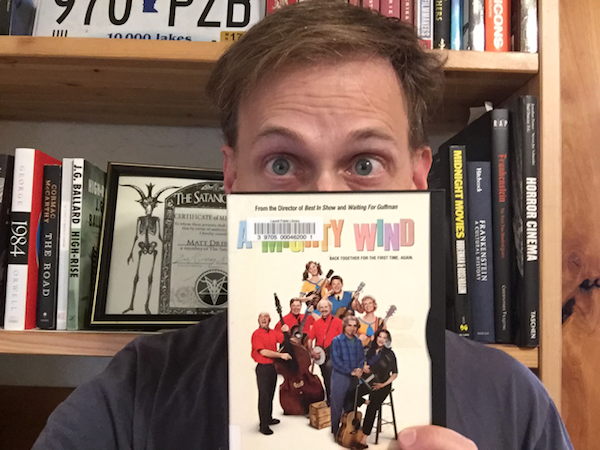
GC: Before you acquired “Caligari” on DVD, did you collect VHS?
MD: Well, I was a big taper on VHS. I had cable, so I recorded a lot of TCM and AMC, when it really was American Movie Classics and not “The Walking Dead.” I had a big shelf full of VHS, and was accumulating volumes of titles. Of course, I recorded everything SLP so I could cram multiple movies on each tape. You live with the fact that it is miserable quality just so you can have them.
GC: Was Premiere the first video store where you worked?
MD: It was the first and only video store where I worked.
GC: We got hired there at the same time.
MD: It was in the summer, as I recall. We made $3.65 an hour, but the draw for us was that we could rent whatever we wanted at no charge, with the exception of brand new releases. The nationwide Blockbuster stores were like McDonald’s — you were going to see dozens of copies of the same movie no matter where you went.
But I loved the mom and pop outfits. In Fargo and Moorhead, we had independent stores and regional chains. Not just Premiere Video, but Take 2 and Cash Wise and Morningside and All-Star and Video Land.
GC: Video Land was the ultimate. Didn’t one of their stores inhabit the space behind the Dairy Queen that Premiere later took over?
MD: Yes, I remember the moat feature where you walked across a bridge over a koi pond to get to the kid section.
GC: And there was a full run of original trilogy one-sheets framed on the wall, including “Revenge of the Jedi.” I rented “Eraserhead,” in the red, white and black box, from that location several times.
MD: What was great about those stores, like the Premiere where you and I worked, is that they would be the only place in town with certain titles. We rented Russ Meyer and Herschell Gordon Lewis movies you could not get anywhere else. It makes you wonder where some of that inventory came from.
GC: When you think back on video store culture, there are certain VHS covers that are branded on your brain — whether you had seen the movie or not. Especially horror and exploitation stuff, like “I Spit on Your Grave,” “Gator Bait,” “It’s Alive” and “Basket Case.”
MD: The cover of the box sells the movie with an allure that the movie itself can’t do. The image for “I Spit on Your Grave” is lurid and shocking, and so is the movie, but in a different way.
GC: One of my favorite memories of working at Premiere with you and Peggy was that we were allowed to play whatever we wanted on the in-store monitors as long as it was rated PG or G. It became our game to find the movies with the most graphic content that were still somehow rated PG. I remember running “Jaws.”
MD: Another memory is the time we were visited by the suits from corporate.
GC: We were playing “To Kill a Mockingbird” that afternoon.
MD: And one of the suits from corporate complained that it was black and white.
GC: So we put “Encino Man” back on for the thousandth time.
MD: We got the Quentin Tarantino education before we even knew of him. I was still pretty green in my cinema history, so it felt like we had a limitless supply. It felt like owning a library.
GC: It was a parallel education. There was the film education we got from Ted Larson, and then there was the education that we provided each other. Like so many cinephiles, we were watching more content than was healthy. Why settle for 3-for-3 or 5-for-5 when you could do the 7-for-7 special?
MD: Oh, the Cash Wise days, which came after our time at Premiere! After we exhausted one store we would just move on to the next.
GC: It was not uncommon for us to pick up a 7-for-7 and then watch them all in a day or two. Whatever you hadn’t seen, you put in the basket. One time, we trekked through Ken Russell’s “Women in Love” and Marcel Ophuls’ “Hotel Terminus: The Life and Times of Klaus Barbie” back to back. And “Hotel Terminus” is four and a half hours long!
MD: Something I could not do today. I can’t sit through more than two movies in a row now. I have to take care of my body. What I don’t like about the streaming world is that it is easy to abandon movies that you start, which I do more than I would like to admit. When we rented from a video store, we watched the whole thing, no matter what.
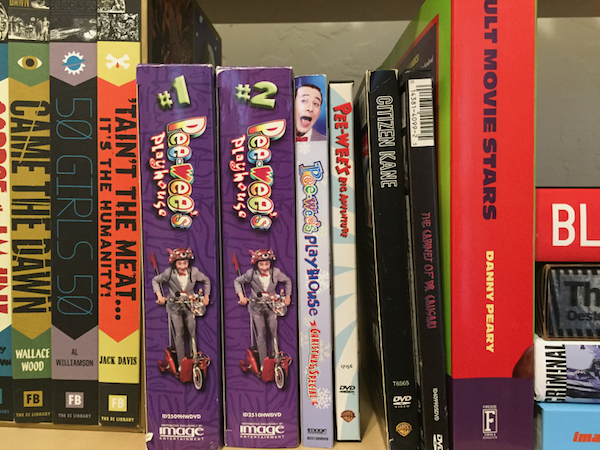
GC: We have to talk about David Bradley. There were a lot of rare 16mm treasures in his famous personal archive. Those floor to ceiling bookcases held every issue of Famous Monsters of Filmland, academic cinema journals, and hundreds of movie books. Didn’t he have a screen-used model of the Nautilus from “20,000 Leagues Under the Sea” hanging from the ceiling?
MD: Oh, yeah. And a sword and shield used in “Ben-Hur.” He would just toss the keys to the guest house at us and tell us to go and pick out a movie to watch. Whatever we wanted to see.
GC: We were into Dreyer and watched prints of “Vampyr” and “The Passion of Joan of Arc” with live, running David Bradley commentary. By the time we were hanging out with him in the mid-90s, many of the stars he hosted at his New Year parties were gone.
MD: He just wanted somebody who was into movies to talk to, I think.
GC: When you brought up a performer, he would shout his approval or disapproval. He threw Veronica Lake under the bus with a salty, unprintable line. He always referred to Charlton Heston’s wife Lydia as “Hydia.” The most memorable David Bradley quotation is that he would point to Heston’s memoir, in which Heston referred to Bradley as “something of a genius,” and say, “It’s right there in that book!”
MD: He would say stuff like that but then on the drive home we would wonder whether to ask him if we could watch “They Saved Hitler’s Brain” or “Dragstrip Riot” or “12 to the Moon.” We never did.
I remember feeding and walking his dog, Sammy. Bradley couldn’t do it anymore. His knees were shot and his eyesight was poor and he was in bad physical shape. Here is this elderly, forgotten movie director, living in a decaying house like Norma Desmond.
GC: That main living room/screening room was like a little museum. I loved the framed photos of legends and superstars of the silent and early sound eras posing with him: Von Sternberg and Fritz Lang.
MD: He seemed a little shocked and saddened when he found out we were moving. I had accidentally left a hoodie at his house, and he was kind enough to box it up and mail it to Ted, who returned it to me.
When Jenn and I decided to leave Los Angeles the second time I lived there, I drove up into the hills one night just to go by his place. I passed David Lynch’s two houses, and the house Marlon Brando once owned, but for some reason I could not find Bradley’s residence. I don’t know why I couldn’t find it. It was like he was a ghost and the whole thing had been a dream.
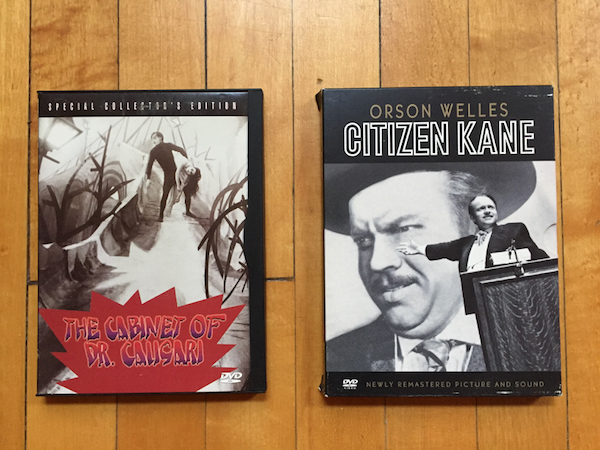
GC: People like Ted Larson and David Bradley are a rare breed. Anyone who really loves movies can relate to their obsession. What was the movie that lit a fire for you?
MD: “Star Wars.” I am not sure if it was part of a documentary on TV, but I remember seeing footage of the effects and model work being photographed. The camera behind the camera operator. And that was my earliest inclination that movies were made by an army of technicians, and it all looked incredibly exciting and fun.
We were living in Denver, Colorado when “Star Wars” came out. I heard about it from other kids and I dragged my parents to it.
And then I went back. A lot.

